Piet Mondrian: Abstract Geometry on Canvas
Piet Mondrian was one of the first painters to express himself using abstract language in its simplest form. His work still resonates in fields as varied as architecture, decorative arts, furniture, fashion and graphics.
Pieter Cornelis Mondriaan was born on March 7, 1872 in Amersfoort, the Netherlands. His family moved when his father, an art teacher and Calvinist pastor, was appointed principal of a primary school in Winterswijk. The young Piet became interested in art at an early age, and was encouraged by his father and his uncle, who he learned to paint with outdoors (an innovation in the 1880s) on the banks of the Gein.
Read: Abstract Art: From a Genre to a Movement
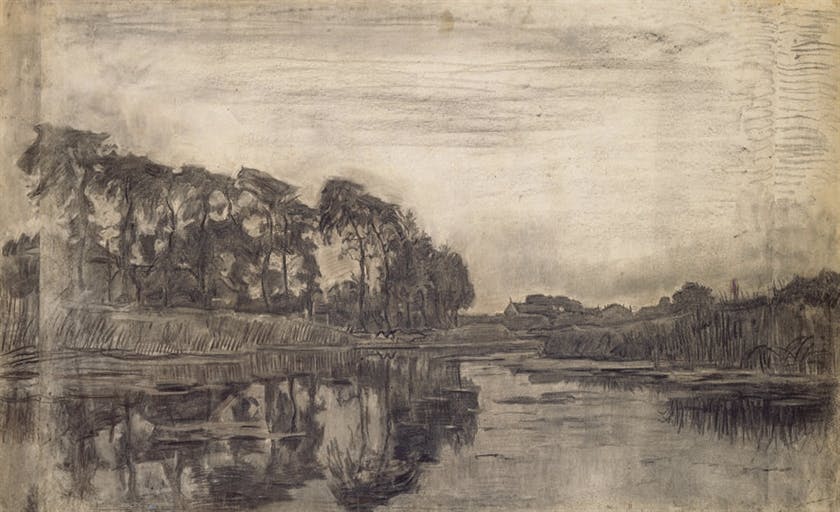
Influenced by the art of the romantic-Nordic tradition, which at the turn of the 20th century produced many landscapes, Mondrian researched the effects of light and form, making groups of tree trunks and branches a recurring motif.
In 1892, Mondrian enrolled at the Royal Academy of Fine Arts in Amsterdam (although he was already a qualified professor) and after 1900, his painting approached the Symbolist movement, which seek to show ideas.
In June 1908, his meeting with Jan Toorop, a pillar of Dutch Symbolism, confirmed his new style and vigorously strengthened his exploration of "form-ideas". This material research is embodied, among other works, in his 1907 sketch on cardboard entitled Le Nuage Rouge, where the landscape is simplified to the extreme and the colors have only symbolic value. Little by little, Mondrian detached himself from figuration…
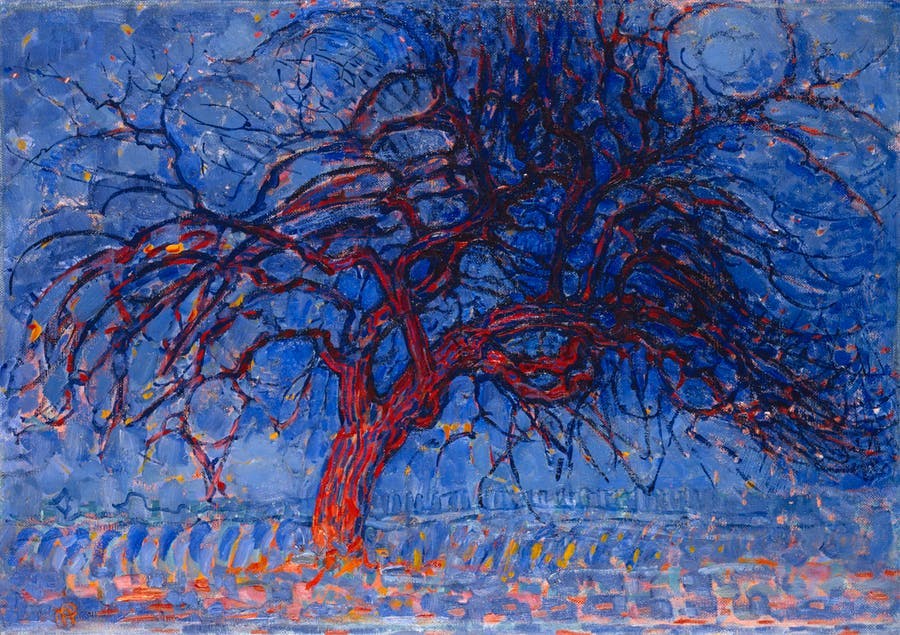
His paintings are simplified, his colors become more pure and free themselves from the notion of copying reality. His discovery of the works of Van Dongen and Van Gogh would have an ripple effect on his work. Mondrian embraced their symbolic use of color and in a burst of lyricism, pushed his palette to the extreme in Moulin au soleil (1908) and The Red Tree (1908-1909), paintings with garish reds tempered with blue on explosive canvases.
Read more: Vincent Van Gogh: The Tortured Artist
His cubist phase occurred in Paris, when he moved there in 1911 and abandoned his extended name to be called only "Piet Mondrian". He takes the path of cubism, already traced by his contemporaries Picasso and Braque, and reduces his palette to more sober ranges before amplifying the abstraction a little more with each canvas, to end up reaching the border where the figure clears in the structure. He later declared: "I felt that only the Cubists had discovered the right path and for a long time I was very influenced by them. "
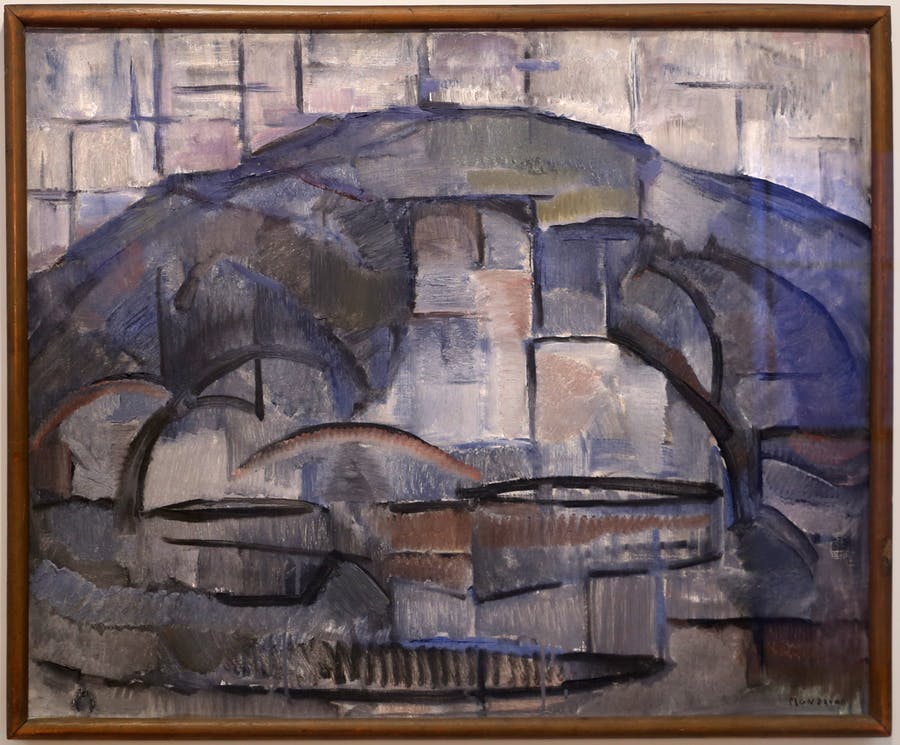
The years 1913 and 1914 defined the rest of his career, when he introduced a new pictorial language and became one of the leaders of abstract art. Carried away by the movement in full effervescence, he experimented alongside Kandinsky, Léger, Picabia and Delaunay. In January 1914, he summarized his intellectual progress in a letter to his friend Brenner: "I build lines and combinations of colors on flat surfaces in order to express, with the greatest consciousness, a general beauty. Nature (or what I see) inspires me, puts me, like any painter, in an emotional state which pushes me to create something, but I want to stay as close as possible to the truth and to extract everything, until that I reach the foundation (which remains only an external foundation!) of things […]. I believe that it is possible, thanks to horizontal and vertical lines constructed in full awareness, but without calculation, suggested by an acute intuition and born from harmony and rhythm, that these fundamental forms of beauty, supplemented as needed by other straight or curved lines, can produce a work of art as powerful as true."
Read more: Sonia Delaunay: Introducing Modernity
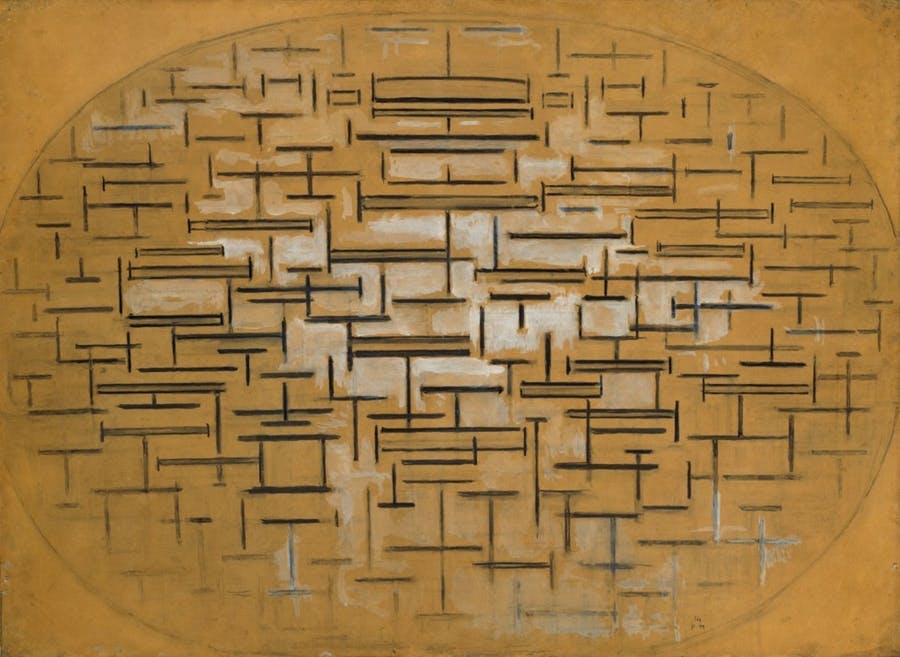
He returned to his home country in 1915 after the death of his father and worked to highlight the inadequacies of Cubism, not only by transcending them, but also by switching to a purer abstraction. His works, like Océan 5 (1915), are adorned with vertical and horizontal lines, and although they are composed on a precise motif, are only a radical simplification of the graphics. During this year, Mondrian started many paintings but did not finish much.
He contributed to the Dutch review De Stijl, founded by Theo van Doesburg in 1917, then returned to Paris in 1919 and in his studio rue de Coulmiers started painting colored grids and more or less completed canvases. As his writings published in De Stijl relate , Mondrian wishes to discard materialism in nature in order to keep only its essence, to express itself only by “the abstraction of all form and color, that is to say […] The straight line and the clearly defined primary color."

This is how red, yellow and blue integrate his palette permanently, and he came to associate white with the background, and black as the divider of the colors. He varies the size of his rectangles and the thickness of his lines, but structures his works in strict geometry and gives the right angle a primordial importance, mirroring his theosophical belief.
Mondrian will refine his representation system for 20 years, until his move to New York. Sometimes monochrome, sometimes colorful, with or without double lines, Mondrian explores all possible variations and becomes a major figure of the modern movement in the arts and architecture. He even went so far as to inspire the fashion world, as in 1931, when stylist Lola Prusac created for Hermès a range of suitcases inspired by his works, or in 1965, when Yves Saint-Laurent launched the famous Mondrian Collection comprising six dresses streaked with colored lines and shapes.
Read more: YSL: Fashion’s Foremost Initials
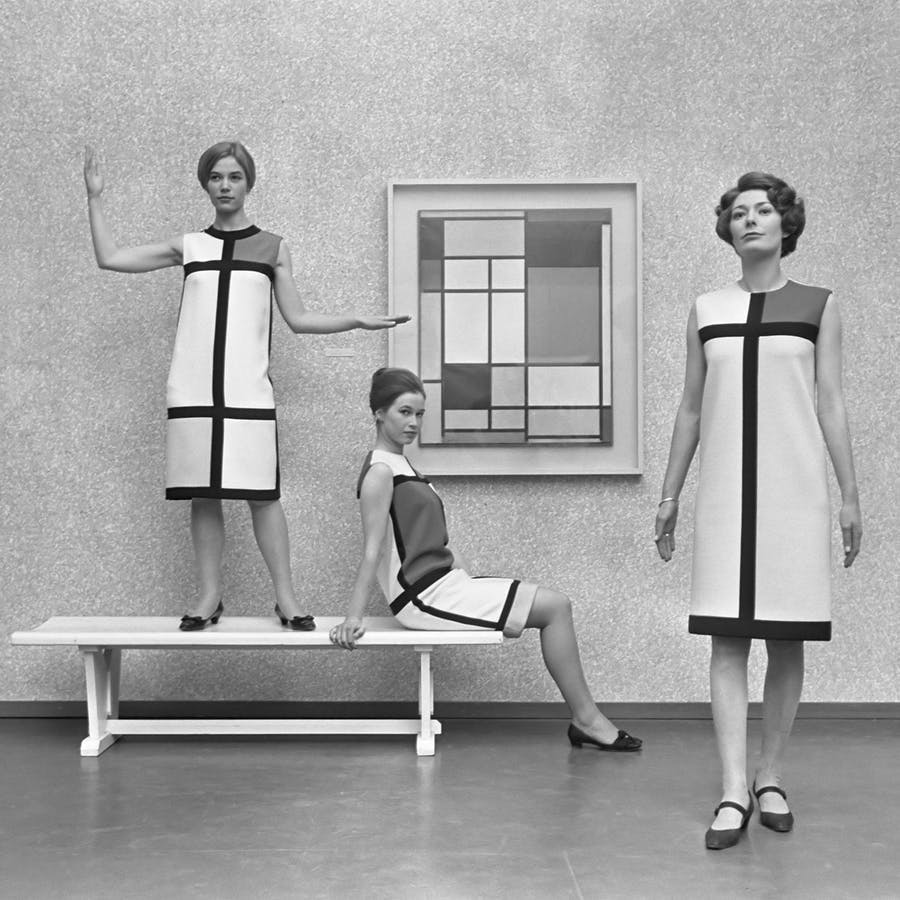
Supported by Peggy Guggenheim, he was featured in many numerous exhibitions and alerted Guggenheim to the potential of Jackson Pollock. Mondrian died of pneumonia in February 1944. Nearly 200 people attended his funeral, including the artists Alexander Archipenko, Marc Chagall, Marcel Duchamp, Fernand Léger, Alexander Calder and Robert Motherwell.
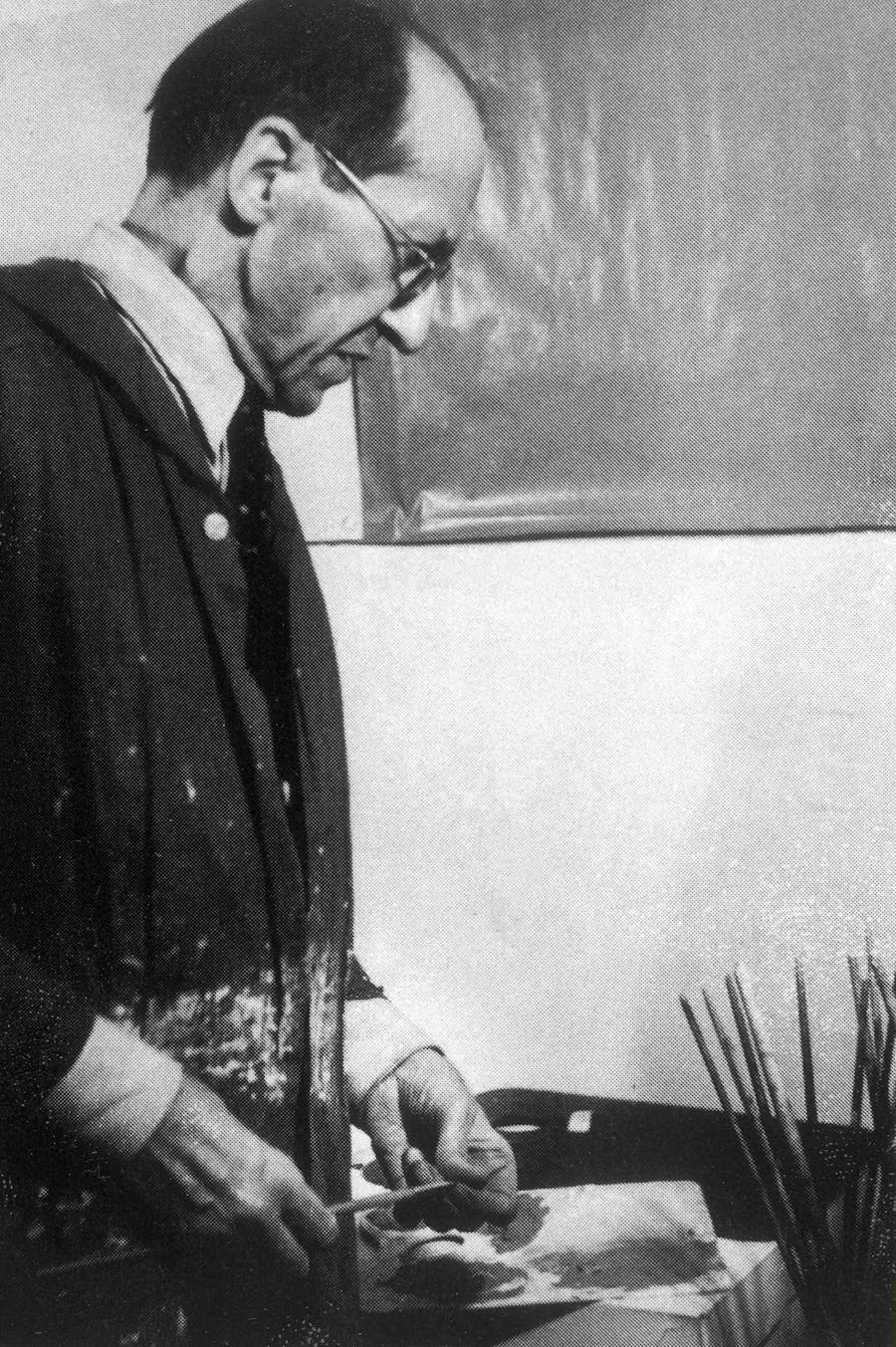
Mondrian is today one of the most expensive artists in the world on the auction market. The painting Composition No. III, with Red, Blue, Yellow, and Black (1929), sold for $50.6 million, his world record, in May 2015 at Christie's.


